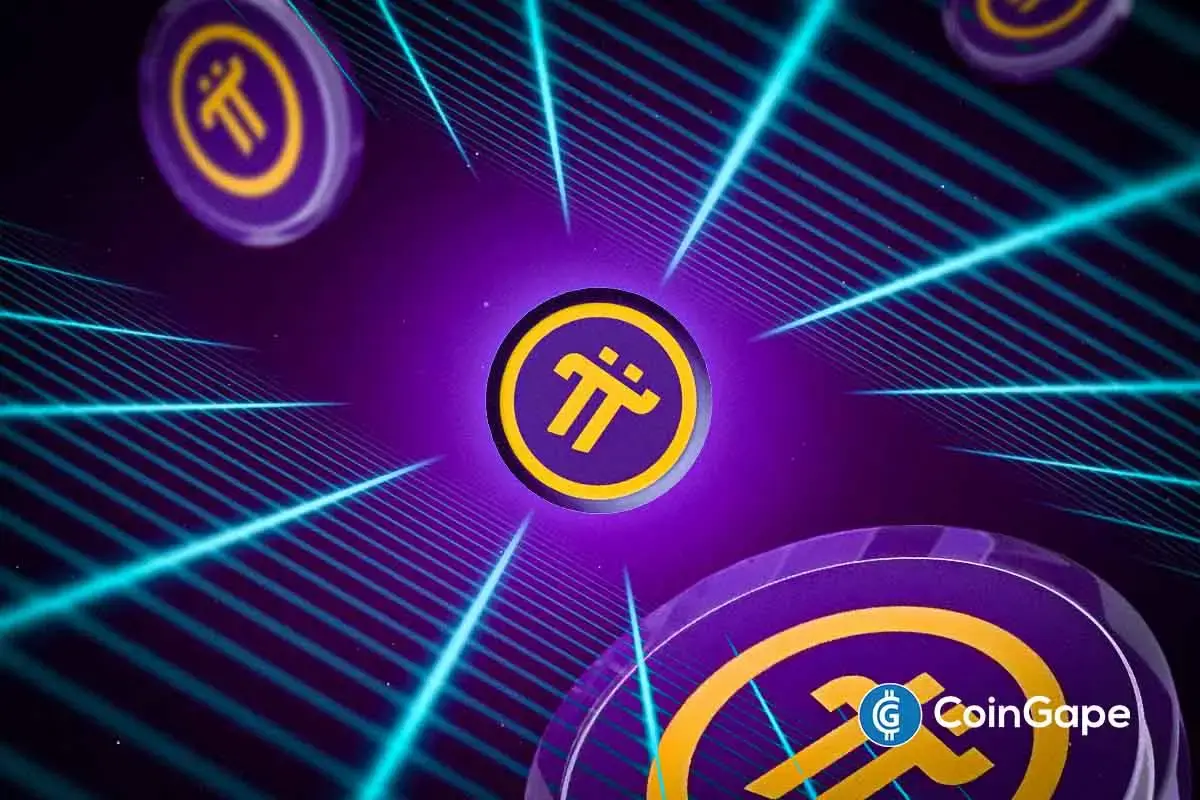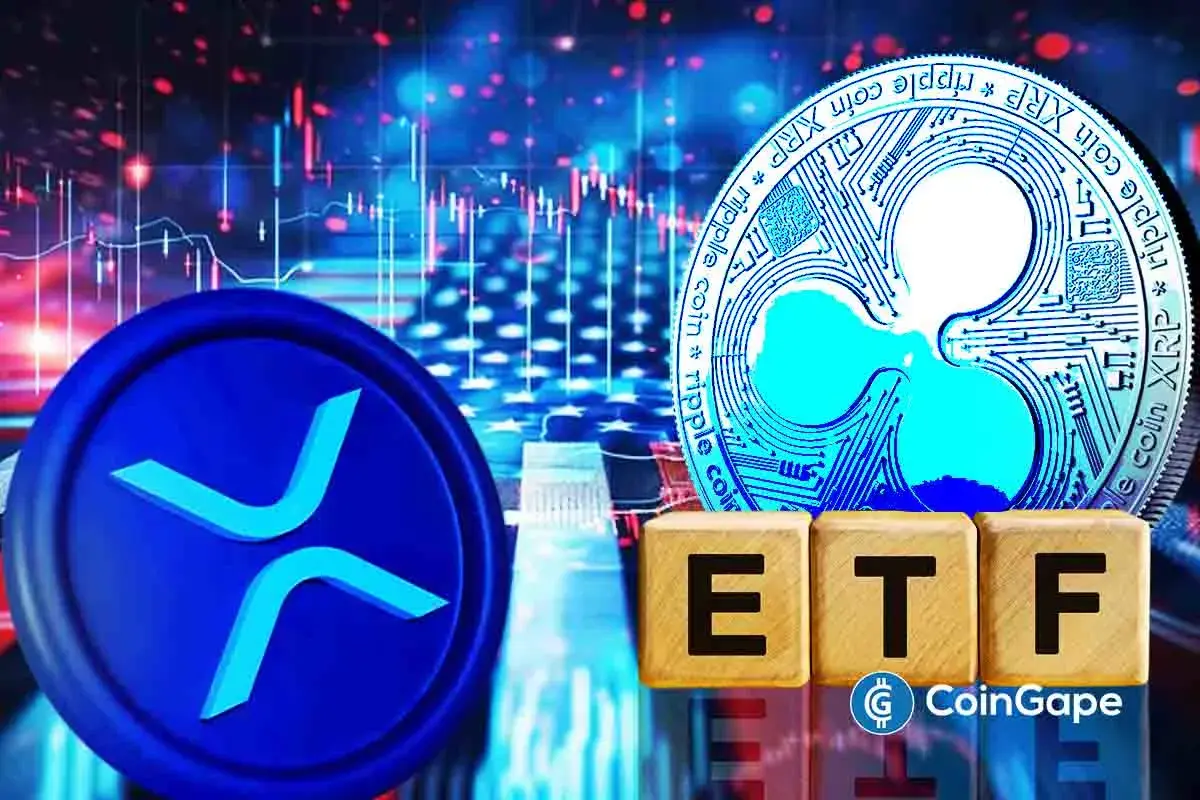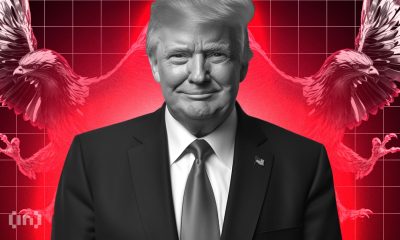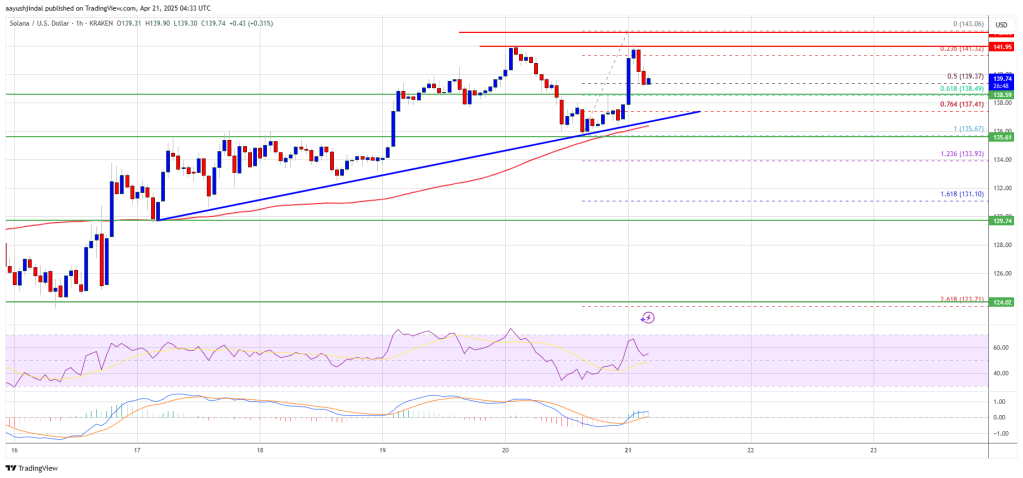Market
Meme Coin Industry Will Reduce Fraud Over Time

In February, the Libra scandal involving Argentine president Javier Milei shook the crypto sector. It also angered many Web3 members, who argue that meme coins damage the ecosystem’s growth and unfairly target smaller investors.
BeInCrypto spoke with Memeland CEO and Founder Ray Chan at Consensus Hong Kong to discuss recent events involving meme coin launches and the sector’s future.
LIBRA: From a Token to a Meme Coin
The LIBRA meme coin scandal was unique in many ways. An unidentified group created a website for the “Viva La Libertad” project, inspired by a slogan Argentine President Javier Milei uses regularly.
The website, which is still active, has a mission statement of boosting the Argentine economy by funding small projects and local businesses. The LIBRA token was launched to channel funding as part of the project’s strategy.
According to the token distribution diagram, 50% of tokens would be used to fuel Argentina’s growth.
A couple of hours after the website went live, the LIBRA token was created on the Solana blockchain. Half an hour after the token launched, Milei published his first X post.
“A liberal Argentina grows! This private project will dedicate itself to incentivizing the growth of Argentina’s economy, funding small businesses and Argentine start-ups. The world wants to invest in Argentina,” it read.
In that same post, Milei included a link to the Viva La Libertad Project website and LIBRA’s contract number. This identification made it easy for investors to locate and start trading the cryptocurrency immediately.
Soon enough, people started to realize that, more than a token, LIBRA resembled a meme coin.
Meme Coins Face a Piling List of Pump-and-Dumps
Milei’s social media post triggered a surge in the token’s price, with the market cap hitting over $4 billion in hours. This surge allowed insiders to cash out over $100 million in profits.
However, the rally was short-lived. The meme coin had no tokenomics; the website was created hours before the launch, and over $87 million was cashed out in the first three hours. The token’s value crashed soon after, indicating a classic pump-and-dump scheme.
The scheme resulted in mounting criticism, which led Milei to delete his post and attempt to backtrack. The president stated that he had not fully understood the project and that, after learning more, he chose to stop endorsing it.
But the damage had already been done. A joint investigation released by blockchain analytics firm Bubblempas and on-chain researcher Coffeezilla added salt to the open wound.

The investigation revealed evidence that suggested that there were links between the teams behind the LIBRA token launch and the MELANIA coin, launched by First Lady Melania Trump a day before Donald Trump assumed the US presidency.
The analysis confirmed suspicions of insider trading and market manipulation in both cases. It also suggested that this group spearheaded several other token launches, including TRUST, KACY, VIBES, and HOOD, which all ended in sniping schemes and rug pulls.
In response to the scandal, crypto community members took to social media to vent their disappointment in the industry. Some argued that meme coins are extractive, benefiting large insider traders while permanently driving smaller retail investors away from Web3.
“The crypto industry needs to engage in serious self-criticism if it doesn’t want to end up as an irrelevant circus. For years, the major players in the ecosystem have been creating narratives, inflating them, and then dumping tokens on retail investors, securing massive profits while driving the public away from the space. It’s about time we all focus on building value instead of constantly figuring out how to cash out quickly at the expense of those who are just trying to explore what this space is all about,” said blockchain researcher Pablo Sabbatella.
For Memeland founder Ray Chan, a crypto expert with nearly two decades of experience in the meme coin industry, this incident must be analyzed from different perspectives.
It’s common knowledge that the meme coin industry is extractive. Community engagement alone mostly drives many of these coins. Trading is largely speculative, and the market is inherently volatile.
“To me, I think it’s quite important to understand who is launching a token, and what the token is for. If it’s a meme coin, you should expect it to go to zero. Because literally, I think most of these meme coins mentioned that this token doesn’t have any road map or utility. I think this is an entertainment purpose only. If you expect it to go to billions all the time, you’re crazy. That’s on you,” Chan told BeInCrypto.
However, the LIBRA scandal differs from insider cases like the MELANIA coin launch. When Milei shared his original X post, he said the funds would support small businesses and budding Argentine entrepreneurs.
“But at the same time, for some tokens, maybe LIBRA, they mentioned that they are launching a token to support some other companies, to support some goals. If they don’t do it, I think that’s an issue,” he said.
When asked how to safeguard users against common practices in meme coin trading, such as rug pulls, pump-and-dump schemes, insider activity, market manipulation, or sniping, Chan said these issues will likely become less frequent over time.
Meme Coin Industry Still in Its Early Stages
Meme coins have existed for slightly over a decade. The “doge” internet meme became widely popular on social media in mid-2013.
Leveraging this trend, Jackson Palmer and Billy Markus created Dogecoin, launching it as a cryptocurrency on the Bitcointalk forum in December of the same year. This event marked Dogecoin’s distinction as the first cryptocurrency based on an internet meme.
According to Chan, given that this industry is still in its nascent stages, investors need to accept the market’s natural instability before deciding to participate.
“Before going in, or whether you invest $10,000 or $100,000, you have to understand that this industry is very new, and any new thing is very volatile. So, it’s very important to understand the risk before you make the investment or make the gamble,” he said.
Players with extensive knowledge and experience in the field will inevitably have the upper hand.
Expanding the User Pool
Because the meme coin industry is so new, players already well-versed in its mechanisms are more likely to profit from the common schemes associated with the market.
“I think it’s just part of the growing pain because, just like any tech and any sector, someone who is very sophisticated right from the beginning will probably understand the loophole. They will understand the opportunity, be it good or bad, and will just grab the opportunity to make some money,” Chan told BeInCrypto.
As the market ages and the meme coin industry draws new players, these schemes will become less frequent.
“Ultimately, expanding the audience to include more builders who understand crypto and blockchain will attract reputable individuals with their own goals and reputations to uphold. As more legitimate companies and builders enter the space, I expect the entire industry to grow in a healthier direction,” Chan explained.
Consequently, the meme coins will rely less on an important public figure to back them up and focus more on the message they are trying to convey.
“I think the space will be in a better place when support for tokens isn’t driven by influencers but instead by an understanding of the team and their work. Once we reach that stage, it will be a healthier and more sustainable environment,” Chan added.
He also underlined that, though inflating the price of a token based on community engagement has negative aspects, there is also a silver lining.
A Positive to Every Negative
In his interview with BeInCrypto, Chan emphasized the key difference between building on Web2 and building on Web3.
“In Web2, companies heavily rely on venture capital and IPOs, facing numerous constraints. In Web3, however, if you can mobilize a community that understands and supports what you’re building, VC funding becomes far less essential,” Chan explained.
Moreover, launching a meme coin is one of the easiest processes on Web3. Anyone can do it, and this has become one of the most important drivers of its success.
“Number one is the ease of creation. I actually think that tokens are kind of like content. When you lower the barrier of creation, more quote-on-quote creators will join, and they create more content. I think the meme coin is the lowest barrier in crypto. That explains why there are so many new coins launching every single day,” he said.
Jointly using these fundamental aspects of meme coin launches for a specific purpose that prioritizes substance over hype can create much more meaningful outcomes.
“You actually can turn your so-called consumer into a supporter, even into your investor. I think all these kinds of developments and breakthroughs, once you understand them, you won’t give up that easily in crypto and in blockchain,” Chan added.
Given these unique aspects, Chan expects meme coins to have a bright future.
The Future of Meme Coins
Chan argues that the meme coin trend reflects a generalized tendency in technological development. Science and technology are often invented to provide a meaningful solution to an existing problem.
Scientists developed vaccines to prevent terminal diseases like polio and influenza, while engineers invented planes to make the world more interconnected.
Satoshi Nakamoto similarly developed Bitcoin to offer an alternative to traditional financial systems. Blockchain solves acute issues related to data storage, user security, supply chain management, and voting systems, to name a few.
But not all technology is equal in popularity.
“For example, when you look at social networks, the most useful social network is LinkedIn, but the most popular social network is TikTok. That’s because it’s fun, engaging, easy to join, and participate,” said Chan.
Since meme coins in Web3 serve a similar purpose to TikTok in Web2, they can be leveraged to drive further adoption in the long run.
“I think meme coin is the TikTok of crypto. A lot of people say it’s useless, but a lot of people are joining it. And this is actually the biggest driving force of mass adoption. So what I’m believing in when crypto gets more mainstream and when blockchain gets more adopted, meme coin as a category, will gain more market share,” Chan concluded.
Whether or not Chan’s predictions come true largely depends on the sentiment of the crypto sector– especially how newly onboarded users interact with meme coins.
Only time will tell whether the crypto industry’s recent flurry of schemes will push people out of the sector for good or whether the meme coin market will mature like fine wine.
Disclaimer
Following the Trust Project guidelines, this feature article presents opinions and perspectives from industry experts or individuals. BeInCrypto is dedicated to transparent reporting, but the views expressed in this article do not necessarily reflect those of BeInCrypto or its staff. Readers should verify information independently and consult with a professional before making decisions based on this content. Please note that our Terms and Conditions, Privacy Policy, and Disclaimers have been updated.
Market
XRP Bulls Defend $2.00—Is a Fresh Price Surge Loading?

Aayush Jindal, a luminary in the world of financial markets, whose expertise spans over 15 illustrious years in the realms of Forex and cryptocurrency trading. Renowned for his unparalleled proficiency in providing technical analysis, Aayush is a trusted advisor and senior market expert to investors worldwide, guiding them through the intricate landscapes of modern finance with his keen insights and astute chart analysis.
From a young age, Aayush exhibited a natural aptitude for deciphering complex systems and unraveling patterns. Fueled by an insatiable curiosity for understanding market dynamics, he embarked on a journey that would lead him to become one of the foremost authorities in the fields of Forex and crypto trading. With a meticulous eye for detail and an unwavering commitment to excellence, Aayush honed his craft over the years, mastering the art of technical analysis and chart interpretation.
As a software engineer, Aayush harnesses the power of technology to optimize trading strategies and develop innovative solutions for navigating the volatile waters of financial markets. His background in software engineering has equipped him with a unique skill set, enabling him to leverage cutting-edge tools and algorithms to gain a competitive edge in an ever-evolving landscape.
In addition to his roles in finance and technology, Aayush serves as the director of a prestigious IT company, where he spearheads initiatives aimed at driving digital innovation and transformation. Under his visionary leadership, the company has flourished, cementing its position as a leader in the tech industry and paving the way for groundbreaking advancements in software development and IT solutions.
Despite his demanding professional commitments, Aayush is a firm believer in the importance of work-life balance. An avid traveler and adventurer, he finds solace in exploring new destinations, immersing himself in different cultures, and forging lasting memories along the way. Whether he’s trekking through the Himalayas, diving in the azure waters of the Maldives, or experiencing the vibrant energy of bustling metropolises, Aayush embraces every opportunity to broaden his horizons and create unforgettable experiences.
Aayush’s journey to success is marked by a relentless pursuit of excellence and a steadfast commitment to continuous learning and growth. His academic achievements are a testament to his dedication and passion for excellence, having completed his software engineering with honors and excelling in every department.
At his core, Aayush is driven by a profound passion for analyzing markets and uncovering profitable opportunities amidst volatility. Whether he’s poring over price charts, identifying key support and resistance levels, or providing insightful analysis to his clients and followers, Aayush’s unwavering dedication to his craft sets him apart as a true industry leader and a beacon of inspiration to aspiring traders around the globe.
In a world where uncertainty reigns supreme, Aayush Jindal stands as a guiding light, illuminating the path to financial success with his unparalleled expertise, unwavering integrity, and boundless enthusiasm for the markets.
Market
Vitalik Buterin Proposes to Replace EVM with RISC-V

Ethereum (ETH) co-founder Vitalik Buterin has proposed overhauling the blockchain’s smart contract infrastructure by replacing the Ethereum Virtual Machine (EVM) with RISC-V, a widely adopted open-source instruction set architecture.
This shift aims to address one of Ethereum’s key scaling bottlenecks by dramatically improving the efficiency and simplicity of smart contract execution.
Buterin Proposes Ditching EVM for RISC-V
The proposal was detailed in a post on the Ethereum Magicians forum. In it, Buterin suggested that smart contracts could eventually be compiled to RISC-V rather than EVM bytecode.
According to Buterin, this shift addresses long-term scalability challenges. This particularly includes keeping block production competitive and improving zero-knowledge (ZK) EVM-proof efficiency.
“It aims to greatly improve the efficiency of the Ethereum execution layer, resolving one of the primary scaling bottlenecks, and can also greatly improve the execution layer’s simplicity – in fact, it is perhaps the only way to do so,” he wrote.
Current ZK-EVM implementations spend around half of their proving cycles on EVM execution. By switching to a native RISC-V VM, Ethereum could potentially achieve up to 100x efficiency gains.
Importantly, many fundamental aspects of Ethereum’s architecture would remain unchanged, preserving continuity for developers and users. Core abstractions such as accounts, smart contract storage, ETH balances, and cross-contract calls would function exactly as they do today.
Developers would still write contracts in familiar languages like Solidity or Vyper. These would simply be compiled to RISC-V rather than EVM bytecode. Tooling and workflows would remain largely intact, ensuring a smooth transition.
Crucially, the proposal ensures backward compatibility. Existing EVM contracts will remain fully operational and interoperable with new RISC-V contracts.
Buterin outlines several potential implementation paths forward. The first would support both EVM and RISC-V smart contracts natively. The second suggests wrapping EVM contracts to run via an interpreter written in RISC-V. Thus, it would enable a full transition without breaking compatibility.
The third, more modular approach, builds on the second by formally enshrining interpreters as part of the Ethereum protocol. This would allow the EVM and the future virtual machines to be supported in a standardized way.
Buterin stated that the idea is “equally as ambitious as the beam chain effort.”
“The beam chain effort holds great promise for greatly simplifying the consensus layer of Ethereum. But for the execution layer to see similar gains, this kind of radical change may be the only viable path,” Buterin added.
For context, the Ethereum Beam Chain is a redesign of Ethereum’s consensus layer (Beacon Chain). It focuses on faster block times, faster finality, chain snarkification, and quantum resistance. The development will likely begin in 2026.
This proposal fits into Ethereum’s broader vision of modularity, simplicity, and long-term scalability. Previously, BeInCrypto reported on Buterin’s privacy-centric plans for the blockchain.
The proposal focused on integrating privacy-preserving technologies. Moreover, the Pectra upgrade is also nearing, with the launch expected on May 7.
Meanwhile, ETH continues to face market headwinds, trading at March 2023 lows. This year has been quite hard for the altcoin, as it saw a decline of 50.8%. In fact, Ethereum dominance hit a 5-year low last week.

Nonetheless, BeInCrypto data showed a slight recovery over the last 14 days. ETH rose by 6.1%. Over the past day alone, it saw modest gains of 1.7%. At the time of writing, ETH was trading at $1,639.
Disclaimer
In adherence to the Trust Project guidelines, BeInCrypto is committed to unbiased, transparent reporting. This news article aims to provide accurate, timely information. However, readers are advised to verify facts independently and consult with a professional before making any decisions based on this content. Please note that our Terms and Conditions, Privacy Policy, and Disclaimers have been updated.
Market
Solana Rallies Past Bitcoin—Momentum Tilts In Favor of SOL

Solana started a fresh increase from the $120 support zone. SOL price is now consolidating and might climb further above the $142 resistance zone.
- SOL price started a fresh increase above the $125 and $132 levels against the US Dollar.
- The price is now trading above $130 and the 100-hourly simple moving average.
- There is a connecting bullish trend line forming with support at $137 on the hourly chart of the SOL/USD pair (data source from Kraken).
- The pair could start a fresh increase if it clears the $142 resistance zone.
Solana Price Gains Over 5%
Solana price formed a base above the $120 support and started a fresh increase, like Bitcoin and Ethereum. SOL gained pace for a move above the $125 and $132 resistance levels.
The pair even spiked toward the $145 resistance zone. A high was formed at $143.06 and the price is now retreating lower. There was a move below the 23.6% Fib retracement level of the upward move from the $135 swing low to the $143 high.
Solana is now trading above $130 and the 100-hourly simple moving average. There is also a connecting bullish trend line forming with support at $137 on the hourly chart of the SOL/USD pair. The trend line is close to the 76.4% Fib retracement level of the upward move from the $135 swing low to the $143 high.
On the upside, the price is facing resistance near the $142 level. The next major resistance is near the $145 level. The main resistance could be $150. A successful close above the $150 resistance zone could set the pace for another steady increase. The next key resistance is $155. Any more gains might send the price toward the $165 level.
Pullback in SOL?
If SOL fails to rise above the $142 resistance, it could start another decline. Initial support on the downside is near the $138.50 zone. The first major support is near the $137 level and the trend line.
A break below the $137 level might send the price toward the $132 zone. If there is a close below the $132 support, the price could decline toward the $125 support in the near term.
Technical Indicators
Hourly MACD – The MACD for SOL/USD is gaining pace in the bullish zone.
Hourly Hours RSI (Relative Strength Index) – The RSI for SOL/USD is above the 50 level.
Major Support Levels – $137 and $132.
Major Resistance Levels – $142 and $145.
-

 Market16 hours ago
Market16 hours ago1 Year After Bitcoin Halving: What’s Different This Time?
-

 Ethereum23 hours ago
Ethereum23 hours agoEthereum Consolidates In Symmetrical Triangle: Expert Predicts 17% Price Move
-

 Market22 hours ago
Market22 hours agoToday’s $1K XRP Bag May Become Tomorrow’s Jackpot, Crypto Founder Says
-

 Market20 hours ago
Market20 hours agoMELANIA Crashes to All-Time Low Amid Insiders Continued Sales
-

 Market21 hours ago
Market21 hours agoCharles Schwab Plans Spot Crypto Trading Rollout in 2026
-

 Ethereum22 hours ago
Ethereum22 hours agoEthereum Enters Historic Buy Zone As Price Dips Below Key Level – Insights
-

 Market17 hours ago
Market17 hours agoVOXEL Climbs 200% After Suspected Bitget Bot Glitch
-

 Market15 hours ago
Market15 hours agoTokens Big Players Are Buying





















